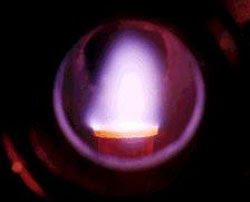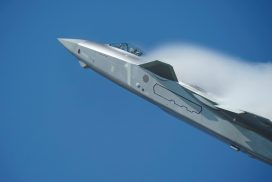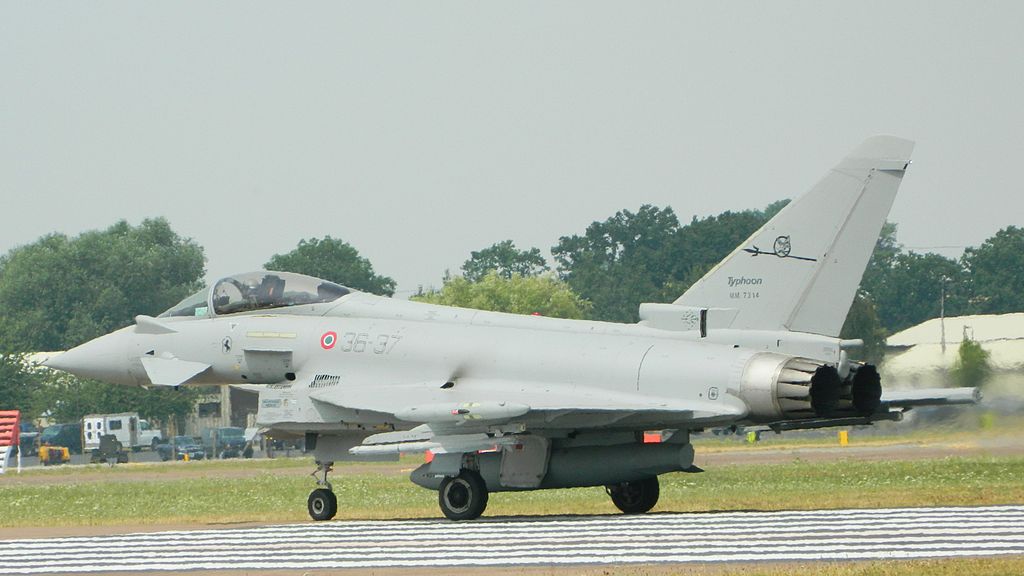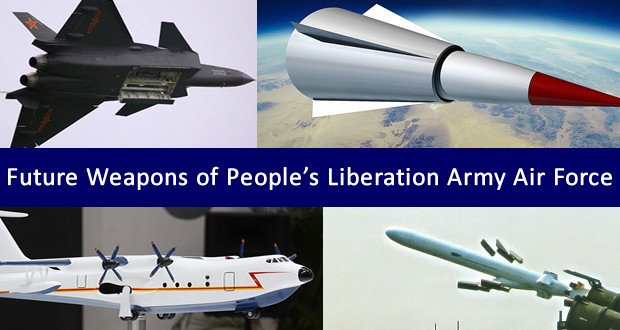 Plasma stealth technology is what can be called as “Active stealth technology” in scientific terms. This technology was first developed by the Russians. It is a milestone in the field of stealth technology. The technology behind this not at all new. The plasma thrust technology was used in the Soviet / Russian space program. Later the same engine was used to power the American Deep Space 1 probe.
Plasma stealth technology is what can be called as “Active stealth technology” in scientific terms. This technology was first developed by the Russians. It is a milestone in the field of stealth technology. The technology behind this not at all new. The plasma thrust technology was used in the Soviet / Russian space program. Later the same engine was used to power the American Deep Space 1 probe.
In plasma stealth, the aircraft injects a stream of plasma in front of the aircraft. The plasma will cover the entire body of the fighter and will absorb most of the electromagnetic energy of the radar waves, thus making the aircraft difficult to detect. The same method is used in Magneto Hydro Dynamics. Using Magneto Hydro Dynamics, an aircraft can propel itself to great speeds.
Plasma stealth is a proposed process that uses ionized gas (plasma) to reduce the radar cross section (RCS) of an aircraft. Interactions between electromagnetic radiation and ionized gas have been extensively studied for a variety of purposes, including the possible concealment of aircraft from radar that plasma stealth theorizes. While it is theoretically possible to reduce an aircraft’s RCS by wrapping the airframe in plasma, it may be very difficult to do so in practice. Various methods might plausibly be able to produce a layer or cloud of plasma around an airframe, from “simple” electrostatic or RF discharges to more exotic possibilities like laser-produced plasmas.
plasma is ionized gas particles. Therefore, plasma flow is a flow of ionized gas particles. Ion is an electrically charged particle or group of atoms. Plasma cloud is a quasi neutral (total electrical charge is zero) collection of free charged particles. The vast majority of matter in the universe exists in plasma state. Near the Earth plasma can be found in the form of solar wind, magnetosphere and ionosphere. The main property of plasma (for our purposes) is its frequency, which is equal to a square root of a ratio of 4 * Pi * square of ion charge * concentration of ions to the mass of ion:
SQRT ( (4 * Pi * n * e^2) / m ),
where e is electron or ion charge, n is concentration of ions per volume of plasma and m is mass of ion.
 So, one proposal is to charge leading and trailing edges of an aircraft. Russians have an interesting and very advanced project for a hypersonic plane called “AJAX.” This particular aircraft is supposed to create plasma at the leading and trailing edges of its body using electrostatic charges. This aircraft design is directly related to those described in recent issues of Scientific American and Air International. This type of an aircraft uses electrostatic charges to ionize air near the surface of its body. This is done for several reasons: first, is to create a protective plasma shield to separate the aircraft from superheated air at hypersonic speed. Second reason to ionize air is to achieve smoother air flow across the fuselage of the aircraft. Another reason for creating plasma is to used in conjunction with magnetohydrodynamics (MHD) propulsion system for hypersonic travel. Here is a link to a very detailed description of AJAX.
So, one proposal is to charge leading and trailing edges of an aircraft. Russians have an interesting and very advanced project for a hypersonic plane called “AJAX.” This particular aircraft is supposed to create plasma at the leading and trailing edges of its body using electrostatic charges. This aircraft design is directly related to those described in recent issues of Scientific American and Air International. This type of an aircraft uses electrostatic charges to ionize air near the surface of its body. This is done for several reasons: first, is to create a protective plasma shield to separate the aircraft from superheated air at hypersonic speed. Second reason to ionize air is to achieve smoother air flow across the fuselage of the aircraft. Another reason for creating plasma is to used in conjunction with magnetohydrodynamics (MHD) propulsion system for hypersonic travel. Here is a link to a very detailed description of AJAX.
There are few experimental studies of plasma’s effect on RCS. One of the most interesting articles was published by the Institute of Electrical and Electronics Engineers (IEEE) in 1963 and described the effect of plasma on the RCS of aircraft. The article entitled “Radar cross sections of dielectric or plasma coated conducting spheres and circular cylinders” was based on the data offered by Sputnik, the first artificial satellite launched by the Soviet Union on October 4, 1957.
While trying to track Sputnik it was noticed that its electromagnetic scattering properties were different from what was expected for a conductive sphere. This was due to the satellite traveling inside of a plasma shell.While Sputnik was flying at high velocity through the ionosphere it was surrounded by a naturally-occurring plasma shell and because of it there were two separate radar reflections: the first from the surface of the satellite itself and the second from the plasma shell. If one of the reflections is greater the other one will not contribute much to the overall effect. When the two reflections have the same order of magnitude and are out of phase relative to each other cancellation occurs and the RCS becomes null. The aircraft becomes invisible to radar.
In January 1999, the Russian news agency ITAR-TASS published an interview with Doctor Anatoliy Koroteyev who talked about the plasma stealth device developed by his organization. Doctor Koroteyev was the director of the Keldysh Research Center. There have also been claims that in 2002 the Russians tested a plasma stealth device on board a Su-27 and RCS was reduced by a factor of 100.
The Keldysh Research Center has created a plasma generator that weights no more than 100 kilos, thus making it possible to be fitted on board most tactical aircraft. Current stealth technology uses radar absorbent materials (RAM) and angled surfaces that don’t reflect radar waves back. This constitutes as a main drawback, since an alteration of the airframe has negative effects on the flight characteristics of these aircraft. The third generation stealth technology F-22 Raptor seems however to be an exception since it is both a fast aircraft and very maneuverable.
By using a plasma generator the aerodynamic characteristics of the aircraft do not suffer which in term means that the payload is increased making it more effective. The use of this technology offers the benefit of not having to carry the payload internally to be able to fool enemy radar. The Sukhoi Su-35 and the MiG-35 (both upgrades of Su-27 and MiG-29) are the first to benefit from this technology.
 One of the most interesting russian fighters to benefit from the plasma stealth technology is the MiG 1.42/1.44 also known as the MFI (Mnogofunktsionalny Frontovoi Istrebitel – Multifunctional Frontline Fighter). This new aircraft is a fifth generation air-superiority fighter, a rival for the American F-22 Raptor. Both aircraft have the same supercruise capability as well as thrust vectoring for super maneuverability (a capability to fly at supercritical angles of attack, at increased level of sustained and
One of the most interesting russian fighters to benefit from the plasma stealth technology is the MiG 1.42/1.44 also known as the MFI (Mnogofunktsionalny Frontovoi Istrebitel – Multifunctional Frontline Fighter). This new aircraft is a fifth generation air-superiority fighter, a rival for the American F-22 Raptor. Both aircraft have the same supercruise capability as well as thrust vectoring for super maneuverability (a capability to fly at supercritical angles of attack, at increased level of sustained and
available g-loads and high turn-angle rate, which require a greater thrust-to-weight ratio and improved wing aerodynamic efficiency). This aircraft may prove to be a milestone in aviation, as so many Russian aircraft were before.
What effect exactly would this plasma have on the RCS of the aircraft? It would reduce it significantly. Of course, an aircraft equipped with electrostatic charge generators does not need to have hypersonic capability to ionize air near its surface, so, we must not look at capability to ionize air as necessarily connected with hypersonic flight or MHD propulsion. Will the aircraft glow in the dark – most likely yes. This, however, is a small drawback since we are interested about radar detection, i.e. – beyond visual range detection.



